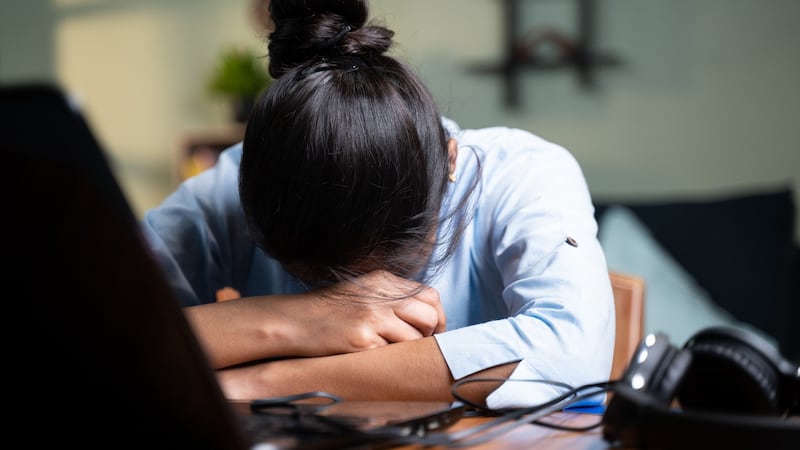* "What the last two years have demonstrated is that there is no longer a clear roadmap, and every organisation must spend time understanding the needs of their workforce in a way they never had to do before." These are the words of Lisa Stevens, an industry veteran of 30 years and now the global chief people officer and head of human capital solutions at professional services firm Aon.
“The more agile and flexible organisations are, the better they’ll be at winning the war for talent,” she says.
Aon employs 50,000 people across 120 countries, including more than 700 in Ireland. Stevens believes a holistic approach to employee wellbeing, which covers people's emotional, physical and financial health, will play a critical role in helping organisations keep on top of their personnel needs in the future.

One of Stevens’s first actions when she joined Aon last year was to appoint a chief wellbeing officer to signal that wellbeing was no longer just an HR issue but something that everyone with a leadership role within Aon should have a vested interest in supporting.
“Traditionally, clients came first and that can’t be the case any more,” she says. “The workforce needs to come first or at least there has to be a better balance between client needs and workforce needs.”
A recent global wellbeing survey by Aon, conducted with more than 1,600 companies in 41 countries, including 81 in Ireland, looked at the top wellbeing risks having an impact on company performance. For the Irish respondents, work-life balance was identified as the top concern followed by mental health issues and burnout.
The survey also indicated that Irish companies were ahead of their international competitors in terms of embracing employee wellbeing, with 96 per cent of businesses here having at least one initiative (mainly around physical and emotional supports), compared with 86 per cent of firms in Europe.
Life balance
The survey also showed that companies that improve employee wellbeing by 4 per cent see a 1 per cent increase in company profits and a 1 per cent decrease in employee turnover.
“What’s becoming clear as we exit the pandemic is that the debate is no longer about work-life balance. It’s about life balance, because our work and our personal and professional lives have collided in the last two years,” says Stevens. “What this looks like in practice is taking care of the wellbeing of the entire person, not just parts of them, to create resilience in an environment that’s become completely uncertain.
“Wellbeing is so much more than an individual programme, and it requires buy-in to create a business culture that fosters it. Central to this is recognising that the important thing is how people work, not where they work.
“At Aon, we have three different job types – office-based a few days a week; hybrid (the majority); and remote – and how this operates is based around the four Cs: clients, collaboration, coaching and celebration, and how we implement them.”
As part of its commitment to employee wellbeing, Aon uses an in-house tool called the human sustainability index, which assesses people under eight different professional and personal headings including mental health, meaning and purpose, competency and financial health.
It only takes minutes to complete and those who do so are walked through their results privately with an experienced coach and no personal information is shared.
“We need to be curious and to understand what it is our colleagues need in order to feel resilient and that they belong,” says Stevens. Asked what this looks in reality, especially where people are working remotely, she acknowledges it’s not that simple.
“Where a manager may not have seen someone for maybe two years, it’s not enough to casually ask ‘How are you doing?’ It needs to go deeper to get at how someone is actually feeling, and questions may need to be asked more than once and you need to really listen for the answer,” she says.
Anonymous data
One of the ways Aon gets employee feedback is through pulse surveys, which have increased in frequency during the pandemic. It also uses anonymous aggregated data to identify gaps that could be addressed with training.
“One example is trying to increase people’s resilience because the resilience they have now might be fine but, based on what’s happening in the world today, it could be a very different picture a few weeks from now,” says Stevens.
“At the risk of sounding a bit edgy, I think we have to be up front in talking about mental health and we have to approach the topic in ways we didn’t do before. We need to make it a comfortable conversation, but we also have to be comfortable being uncomfortable because, again, we don’t have a roadmap for this.
“The collision of our personal and professional lives has put the issue in front of everyone, making it impossible to ignore.”
Not everyone is easy with the mental health conversation, and how comfortable they feel is to some extent dictated by demographics. Younger employees are generally more open than older colleagues, who grew up in a very different working environment.
“In a way it’s similar to the diversity and inclusion conversation,” she says. “It’s the responsibility of HR departments to help provide the framework and whatever training is needed. After that it’s something every leader within an organisation has to own.”
* This article was edited on Monday, April 11th, 2022












